- JST Home
- /
- Strategic Basic Research Programs
- /
 ACT-X
ACT-X- /
- Research Director/
- Life and Information/
- [Life and Information] Year Started : 2024
[Life and Information] Year Started : 2024
Masato Ishikawa
Cell fate control based on gene regulatory dynamics
Grant No.:JPMJAX24L1
Researcher
Masato Ishikawa

Assistant Professor
Institute for Life and Medical Sciences
Kyoto University
Outline
Experimental exploration of methods to control cell fate by manipulating the expression of a small number of key genes is a laborious task. In this project, I aim to computationally predict methods for cell fate control. I will model gene expression dynamics based on gene regulatory networks and time-series expression data. My goal is to experimentally validate the cell fate control methods predicted through simulations of these dynamics. Furthermore, I will infer the molecular mechanisms underlying cell fate determination based on these dynamics.
Hiroyuki Ueda
Brain Functional Imaging with Low-Field MRI: Towards Higher Spatiotemporal Resolution
Grant No.:JPMJAX24L2
Researcher
Hiroyuki Ueda

Assistant Professor
Graduate school of Engineering
Kyoto University
Outline
In this project, I try to realize the low-field (LF) and ultra-low-field (ULF) functional MRI and achieve higher spatiotemporal resolution using information science. The conventional fMRI, visualizing the hemodynamics, is difficult to measure brain function in the low- and ultra-low-field MRI scanners. Meanwhile, the spin-lock sequence, making contrast change based on the oscillatory magnetic field, has potential to realize the LF- and ULF-fMRI. On the other hand, the LF- and ULF-MRI scanners are struggling to the low image quality and time-throughput. I will also challenge to this problem using deep neural networks, especially based on the physics models.
Wan Kin Au Yeung
Estimating the dyanmics of chromatin structure via intergrated machine learning
Grant No.:JPMJAX24L3
Researcher
Wan Kin Au Yeung

Assistant Professor
College of Liberal Arts
International Christian University
Outline
Mammalian oocytes are cells that critically support the embryonic development of the next generation. The unique three-dimensional chromatin structural changes during oocyte growth are a valuable research subject in genome biology, with potential implications in developmental biology, aging research, and assisted reproductive technologies. However, due to the difficulty of long-term in vivo observation, the mechanisms, roles, and actual processes of these structural changes remain unresolved. In this study, we aim to elucidate these structural changes through machine learning-directed simulations based on real chromatin structures of oocytes.
Tomoko Kasahara
Research and Application of Biological Age and Its Dynamics
Grant No.:JPMJAX24L4
Researcher
Tomoko Kasahara
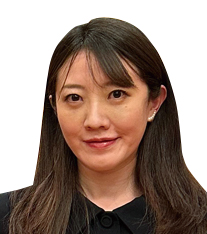
Assistant Professor
Graduate School of Medicine
Tohoku University
Outline
The biological clock, which is emerging as a new standard in aging medicine, is a sophisticated technique that quantifies the true aging status based on biological data. This project proposes a novel approach to integrate life science findings with advanced computational methods to establish new indicators for aging medicine. The researcher aims to apply these innovative indicators to actual aging processes, conducting rigorous research on anti-aging strategies. The ultimate goal of this study is to elucidate the intricate mechanisms of aging and explore groundbreaking anti-aging interventions. Through this individual research endeavor, the investigator seeks to contribute significantly to the field of aging medicine and pave the way for future therapeutic developments.
Risa Kawaguchi
Decoding the Role of Epigenetic Fluctuation in Stochastic Cell State Transitions
Grant No.:JPMJAX24L5
Researcher
Risa Kawaguchi
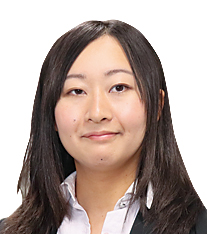
Associate Professor
Graduate School of Pharmaceutical Sciences
The University of Tokyo
Outline
The main goal of my project is to understand why even cells under the same conditions show the heterogeneity in their epigenetic states, which leads to random changes during the cell state transitions. By using advanced deep learning techniques, I aim to overcome biases in single-cell multiome analysis and establish a flexible model that explains how environmental and stochastic fluctuations bring about diverse epigenetic changes, resulting in random shifts in cell behavior, especially during the stochastic cell state transition in the context of reprogramming and differentiation.
Masaru Koido
Machine learning method for predicting transcriptomic regulation from small gene sets
Grant No.:JPMJAX24L6
Researcher
Masaru Koido

Assistant Professor
Graduate School of Frontier Sciences
The University of Tokyo
Outline
Measurement techniques focusing on only a few hundred genes have accumulated numerous gene expression datasets across a wide range of experimental conditions. In this study, I aim to develop a method for predicting the transcriptome from the expression levels of a few hundred genes by learning DNA sequence-dependent transcriptional mechanisms using machine learning on small datasets. Applying this method to the accumulated data is expected to generate data-driven hypotheses that can comprehensively elucidate condition-specific transcriptional regulatory mechanisms and their DNA sequence dependencies.
Daiki Sato
Deciphering Emotional Contagion and Mitigating Fear through Information Control
Grant No.:JPMJAX24L7
Researcher
Daiki Sato
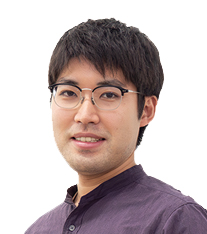
Project Assistant Professor
Graduate School of Science
Chiba University
Outline
The present study focuses on the phenomenon of emotional contagion observed in animal groups, Using Drosophila melanogaster as a model organism to elucidate its molecular mechanisms through genomic analysis and neurological experiments. We aim to visualize the internal psychological states of freely moving flies by applying inverse reinforcement learning to their behavioral data. Furthermore, we seek to achieve emotional modulation by alleviating fear in flies through optogenetic intervention experiments.
Shunsuke Sumi
Development of a method to search conserved RNA structures in vertebrates
Grant No.:JPMJAX24L8
Researcher
Shunsuke Sumi

Project Research Associate
Institute for Quantitative Biosciences
The University of Tokyo
Outline
Non-coding RNAs (ncRNAs) that play critical roles in cellular functions are known to exhibit conserved secondary structures through evolution. However, the evolutionary conservation of ncRNAs remains largely unexplored. In this study, I aim to develop a novel method to search evolutionarily conserved ncRNAs, with a particular focus on vertebrates including humans. This approach will contribute to a deeper understanding of the biological functions carried out by ncRNAs in vertebrate species.
Sotaro Takano
Metabolic model-based comprehensive screening for robust ecosystems
Grant No.:JPMJAX24L9
Researcher
Sotaro Takano

Research & Development Scientist
Bioresource Research Center
RIKEN
Outline
Microbial ecosystems, assemblages of complex interactions among various microbes, are key ecosystems for sustaining life and the environment, including the human body. Especially, its robustness against perturbations is the key to realizing highly functional ecosystems. Here, I aim to develop a platform for comprehensively searching for key metabolic interactions that can contribute to the robustness of microbial ecosystems. To this end, I will construct an algorithm to assemble microbial communities based on genome-scale metabolic models and integrate the coexistence information inferred from publicly available metagenomic databases. By randomly constructing thousands of microbial metabolic networks, I aim to extract the key interactions that can work as drivers of robust ecosystems and identify universal laws between cellular metabolism and community-level stability.
Kazushi Tsutsui
Emergence of Collective Order in Swarms Using Multi-Agent Reinforcement Learning
Grant No.:JPMJAX24LA
Researcher
Kazushi Tsutsui
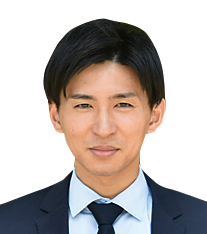
Assistant professor
Graduate School of Arts and Sciences
The University of Tokyo
Outline
This project first focuses on developing a biologically plausible and flexible modeling approach by integrating biological theories with machine learning, and on establishing an AI-driven simulation environment for swarm behavior. Subsequently, this simulation environment will be utilized to analyze collective behavior data across various species, ranging from invertebrates to vertebrates, aiming to discover new insights and uncover common principles underlying these behaviors.
Takehiro Tottori
Biological Information Processing under Computational Limitations
Grant No.:JPMJAX24LB
Researcher
Takehiro Tottori

Special Postdoctoral Researcher
Center for Brain Sience
RIKEN
Outline
Biological systems adapt to their environment by appropriately processing uncertain sensory information. However, it remains unclear how they achieve such adaptive information processing with limited computational resources compared to artificial systems. This study aims to develop a novel information processing theory that accounts for the computational resource limitations inherent in biological systems and to elucidate the fundamental principles governing biological information processing under these limitations.
Kento Nakamura
Connectome analysis based on theory of low-rank neural network
Grant No.:JPMJAX24LC
Researcher
Kento Nakamura
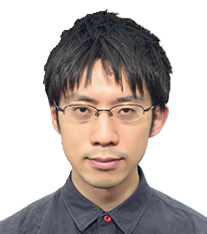
Special Postdoctoral Researcher
Center for Brain Science
RIKEN
Outline
The recently reconstructed fly brain connectome provides a crucial key for exploring how animal perception and behavior emerge from neural network connectivity. This research aims to develop a framework for exploring and validating neural network functions by extending low-rank neural network theory. This theory simplifies neural dynamics analysis by exploiting latent patterns in connectivity structures, but its applicability to biological systems remains elusive. By extending the theory and applying it to actual biological data, we seek to uncover underlying structures and novel functions of brain regions previously underexplored due to a lack of analytical tools.
Momoko Hamano
Prediction of small molecules for direct cell reprogramming
Grant No.:JPMJAX24LD
Researcher
Momoko Hamano
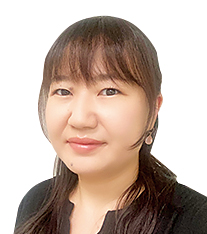
Associate Professor
Faculty of Computer Science and Systems Engineering
Kyushu Institute of Technology
Outline
Direct reprogramming (DR) is a method of inducing cell differentiation in which somatic cells are directly converted into another cell type by small molecules. I elucidate the molecular mechanisms of DR that are induced during the multi-stage cell conversion process by simulating the DR process. Additionally, I develop a method for predicting small molecules that regulate DR molecular mechanisms from a vast pool of candidates. I identify the small molecules that induce DR for converting cells that have critical functions in tissues and propose novel methods for DR.
Takanori Harashima
Rational Engineering of High-performance Multivalent DNA Artificial Molecular Motor
Grant No.:JPMJAX24LE
Researcher
Takanori Harashima

Assistant professor
Institute for Molecular Science
National Institutes of Natural Sciences
Outline
This study proposes the development of a kinetic simulation that considers the chemo-mechanical coupling mechanism of a multivalent DNA molecular motor, as well as a rational engineering for improving motor performance, based on a combination of experiment and simulation. The challenge is to realize a high-performance artificial molecular motor comparable to its biomolecular counterpart. The rational engineering is conducted by iterating a performance improvement cycle, which consists of simulation-based performance prediction, validation through single-particle tracking experiments, and optimization of kinetic parameters using the experimental results.
Yohsuke Fukai
Physical model estimation of reconstructed long-chain chromatin array from three-dimensional structure observation
Grant No.:JPMJAX24LF
Researcher
Yohsuke Fukai

Researcher
Pioneering Research Institute
RIKEN
Outline
The aim of this study is to build a coarse-grained model of chromatin arrays, validated by experimental data, that reflects the pattern and solution environment. To this end, we first develop a systematic method for estimating parameters of coarse-grained molecular dynamics models from single-molecule observational data of fluctuating polymers. We then apply the method to single-molecule structural data of reconstructed long-chain chromatin obtained by cryo-electron tomography, which allows 3D imaging under native conditions.
Nozomi Magome
Constructing the analysis system for elucidation of the mechanism of large-scale fish schools and the social implementation
Grant No.:JPMJAX24LG
Researcher
Nozomi Magome

Graduate Student
Graduate School of Science and Technology
University of Tsukuba
Outline
Although numerical analysis is becoming an important tool for elucidating the mechanisms of fish schools, a unified methodology for precisely and flexibly analyzing large-scale fish schools and implementing it in society has not been established. To address this issue, this research aims to create a general-purpose multi-physics analysis system that encompasses “dynamic and stable local refinement,” “general-purpose large-scale parallel computation,” and “reduction of computational cost through data science technology.
Misa Minegishi
Dissecting the dynamic mechanisms of cellular interactions that promote cancer cell proliferation
Grant No.:JPMJAX24LH
Researcher
Misa Minegishi
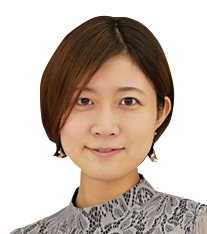
Assistant Professor
Institute for Life and Medical Science
Kyoto University
Outline
The interactions between cancer cells and their surrounding microenvironment promote the survival and proliferation of cancer cells in metastasized organs. These interactions change dynamically, but the complete picture of the molecular mechanisms involved has not yet been elucidated. Therefore, this project aims to quantitatively understand the dynamic interactions between cancer cells and surrounding cells using mathematical models based on spatiotemporal gene expression data.
Osamu Muto
Discovery of governing equations for multicellular systems leveraging prior knowledge
Grant No.:JPMJAX24LI
Researcher
Osamu Muto

Trainee
Research Institute
Aichi Cancer Center
Outline
In this project, I develop a novel analysis method to describe and discover governing equations for multicellular systems that incorporate both biological knowledge-based features and the dynamics of cellular state transitions. This approach provides a model that is biologically interpretable and capable of explaining complex state changes in multicellular systems, enabling the generation of new hypotheses about biological phenomena, and exploring the potential for predicting and controlling cellular behavior.
Ikki Yasuda
Development of an Integrated Computational Method for Predicting Multi-Component Phase Separation of Intrinsically Disordered Regions
Grant No.:JPMJAX24LJ
Researcher
Ikki Yasuda

Graduate Student
Graduate School of Science and Technology
Keio University
Outline
Intrinsically disordered regions (IDRs) of proteins assemble through phase separation in cells. To understand the functions of proteins emerging from this process, it is crucial to predict phase separation. In this project, I develop a novel method for predicting phase separation driven by multiple types of IDR sequences by integrating machine learning, physical models, and molecular dynamics simulations. Additionally, we apply this method to a sequence library of IDRs to elucidate their interaction networks













